Calibration and validation of metamodels for hydroforming applications
P. Guglielmi, G. Palumbo, A. Piccininni
Politecnico di Bari
Vito Primavera
EnginSoft
The increasing need of lighter and more complex components leads to the matching of an innovative manufacturing process with the spreading use of light alloys, such as Aluminium alloys. With this idea kept in mind, HydroForming represents an interesting alternative to the conventional stamping process, due to the possibility of reaching higher level of geometry complexity than conventional processes. On the other hand, drawbacks due to the poor formability of Aluminium alloy at lower temperature have to be faced: these limits can be overwhelmed increasing the forming temperature, that means performing the process at warm temperature. In order to do this, a preliminary activity aimed to the characterization of the Al alloy (in terms of anisotropy and flow curves) was carried out: in particular tensile tests were performed in the “laboratory for Physical Simulations of Manufacturing Processes” (DMMM, Politecnico di Bari). The next phase aimed to optimize the hydroforming process, starting from a full experimental approach: tests were performed in the “Advanced Forming and Manufacturing” Laboratory (TRASFORMA network - https://afmlab.poliba.it/) changing the value of the most important process parameters, such as the forming Pressure, the Blank Holder Force and the Temperature. Tests results were collected in terms of two output variables, able to describe both the sheet thickness reduction and its ability of reproducing the die geometry (extension of the flat region.
The values of the output variables were determined through the adoption of the system ARAMIS, a non – contact optical 3D deformation measuring equipment able to analyse material deformations by means of the DIC (Digital Image Correlation) technique. All the data represented the basis from which the metamodels have been built up using the Response Surface Method (RSM) within modeFRONTIER, multi-objective optimization and process integration platform. In such step, the calibration and validation of metamodels have been carried out by applying suitable RSM algorithms on subsets of the initial available data. In the following, modeFRONTIER allowed to perform the subsequent optimization process: a multi-objective genetic algorithm was chosen in order to perform the virtual (i.e. coming from metamodels) optimization in respect of the sheet thickness reduction and extension of flat region.



